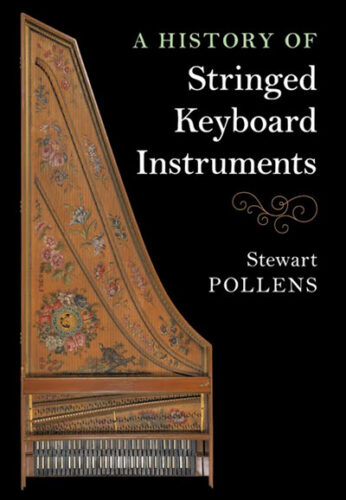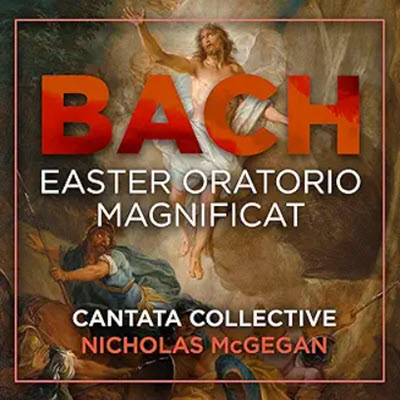by Stewart Pollens
Published August 12, 2024
Letter to the Editor:
I wish to respond to John Koster’s review of my book A History of Stringed Keyboard Instruments, which appeared online in Early Music America. [A Problematic New History of Keyboards, published July 15, 2024.]

Koster begins with a criticism of the size and quality of the book’s 94 illustrations, claiming that “the selection is poor and many are barely larger than thumbnails.” In fact, all are specifically related to the text (a requirement of Cambridge University Press), and the only one approaching the size of an entire thumb, rather than a thumbnail, is an illustration of Bebung notation (which is presented virtually life-size as it would appear in a musical score) — most are what might be termed “quarter page” illustrations. Many of the instruments illustrated are from the excellent collection at the Metropolitan Museum of Art, where I worked as conservator from 1976 to 2006, or are photographs I took during research trips to museums and collections abroad.
Regarding Koster’s claim that Sebastian Virdung’s 1511 and Martin Agricola’s 1528 illustrations are “botched,” readers may falsely come to the conclusion that they have been mangled by me or in printing — yet in my discussion of the accurate depictions of them in my book, I point out that the originals may have been reversed left-to-right because they are woodblock prints, and I suggest alternate compasses based upon intentionally reversed (and appropriately captioned) illustrations of those appearing in the original texts. Virdung and Agricola are among the earliest treatises on musical instruments and contain a wealth of important information that must be considered in any comprehensive history of keyboard instruments (but rarely are).
Koster states that “more than half of the nearly nine pages dealing with [Renaissance Italy] discuss documents from 1598 concerning instrumenti pian e forte,” and goes on to disparage them as “whatever these were.” Yet that discussion, along with my complete translation of Henri Arnaut’s Latin treatise on keyboard instruments (ca. 1440), which includes a description and illustration of a hammer mechanism intended for a variety of stringed keyboard instruments, proves that the “piano” is as old an instrument as the harpsichord and clavichord — a matter that should certainly interest those involved with Renaissance keyboard music.
Furthermore, 67 pages are entirely devoted to keyboard instruments of the Renaissance, plus there is a chapter devoted to the origin of keyboard instruments (30 pages), and another to the principles of keyboard instrument design and construction (109 pages), which deal specifically and tangentially with Renaissance keyboard instruments.
Koster criticizes the “haphazard structure” of the book and cautions readers to “beware of whiplash,” citing my discussion of Ruckers in two chapters, yet this was necessary because the book is organized chronologically and the Ruckers family was active in both the Renaissance and Baroque periods. A book such as this is rarely read from cover to cover but is more often consulted piecemeal, so I’ve reintroduced material here and there to assist the reader.

In my discussion of Scarlatti, Koster claims as “inexcusable” my “neglect of what has been learned about harpsichords in Scarlatti’s Portuguese and Spanish environs” — but what I have done is concentrate on describing instruments that were specifically available to Scarlatti in the courts of Portugal and Spain (based upon inventories), where he was essentially cloistered during his career.
Regarding variations in keyboard instruments made outside the Royal Palace at Aranjuez and other royal residences during his 24 years there, these are of little relevance in understanding Scarlatti’s keyboard music and its performance. Furthermore, I discuss the presence of Florentine and locally made pianos at court, some of which were surprisingly converted into harpsichords during Scarlatti’s tenure. As I’ve indicated in my book, I was primarily interested in identifying and describing the instruments owned by major musicians and composers during the Baroque, Classical, and Romantic periods — and that is what I’ve done.
For example, I provide a lengthy discussion of the harpsichords owned by one of the Forquerays, which included two by Bellot, and I present two photographs of a harpsichord by Louis Charles Bellot (in the collection of the Metropolitan Museum of Art), including a plan view and discussion of early alterations made to it.
Koster mentions a 1775 Leipzig newspaper advertisement for a harpsichord with a 16-foot stop as proof that J.S. Bach could have been familiar with such a stop. As I mention in my book, the extent to which Bach made use of a 16-foot harpsichord stop is “debatable,” and I cite the participants as well as their arguments in that debate. The fact of the matter is that there is no documentation that he ever owned a harpsichord with such a stop. Koster cites another newspaper advertisement in his discussion of Bach. I have always been cautious of making too much of classified newspaper ads — after all, they represent the discard of certain types of instruments rather than a demand for them.
I will stick with my contention that undue attention has recently been devoted to so-called Pantalon pianos. When I worked at the Metropolitan Museum of Art, and in my travels, I had the opportunity to study, restore, and play such instruments — and I came to the conclusion that they were absolutely dreadful, especially those with tiny bare wood hammers and no dampers, often with soundboards no bigger than a square foot, featuring severely compromised scaling, some loaded with a panoply of redundant mutation stops (in a futile attempt to compensate for lack of their dynamic flexibility, which, after all, is the point of the piano), and often enclosed in primitively painted deal cases.
To conclude that these travesties were taken seriously by musicians such as Bach and Mozart is absolutely ludicrous. That they may have encountered them along the way is inconsequential. Pantalon pianos became popular, primarily in Germany, because they were cheap and easy to construct and didn’t require a knowledge of temperament theory required in designing the splayed keys of a fretted clavichord, nor the precision craftsmanship needed to manufacture harpsichord jacks or complex hammer actions with escapement mechanisms. Any farmer could have cobbled one together.
As I indicate, the “study” of the Pantalon piano has turned into a veritable cottage industry for misguided keyboard historians desperate to carve out new academic terrain. Though I believe I’ve provided an adequate description of this type of piano, another erstwhile colleague of mine has also severely criticized me for “failing to keep up with scholarship” in this realm (such as neglecting to cite a recent dissertation describing a tangent-action piano discovered in Sicily). But there was just no room for trivial pursuits in my 571 page account, which was already over the contracted limit initially agreed upon with my forgiving publisher!
A History can never be The History, and even the totality of the hundreds of books, dissertations, and journal articles (not to mention actual instruments) that I consulted in writing my version cannot tell the entire story.
Regarding Mozart, I feel I provide far more than an “adequate” discussion of the instruments he owned, is alleged to have owned, or is known to have had access to, including that dubious “Walter” concoction on exhibit in the Mozart Museum in Salzburg, which I argue was never owned or even encountered by him (and by “him” I mean either Mozart or Walter).
The worst thing about Koster’s blistering condemnation and misrepresentation of my book is that potential readers will be disinclined to have a look at it. A book review should at the very least provide a summary of the book’s content, which Koster’s fails to do; rather, he focuses on perceived omissions. I believe there is a tremendous amount of information in my book that keyboard players and musicologists might find of value, such as my explanation of intonation and temperament theory; translations of explicit instructions for setting keyboard temperaments published in the 18th century by Jean-Philippe Rameau, Jean Denise, Michel Corrette, and others; a section on enharmonic keyboard instruments; copious transcriptions and translations concerning the stringing, regulation, and voicing of fortepianos found in the notebooks of Johann Andreas Stein and the Schiedmayers; as well as advice provided by 19th-century German-language fortepiano maintenance manuals.
There is considerable technical information on the mechanical workings of clavichords, harpsichords, and pianos (including a clear explanation of the Erard patent for his complex “repetition action,” as well as of his patents leading up to it), and I believe my chapter on the principles of keyboard instrument design provides insights into the engineering aspects of stringed keyboard instrument structure and scaling that are rarely woven into historical studies. The book ends with a chapter on the early music revival as it relates to keyboard instrument making.
Stewart Pollens served as the conservator of musical instruments at the Metropolitan Museum of Art from 1976 through 2006. Cambridge University Press has published five of his nine books: The Early Pianoforte (1995), Stradivari (2010), The Manual of Musical Instrument Conservation (2015), Bartolomeo Cristofori and the Invention of the Piano (2017), and A History of Stringed Keyboard Instruments (2022).




